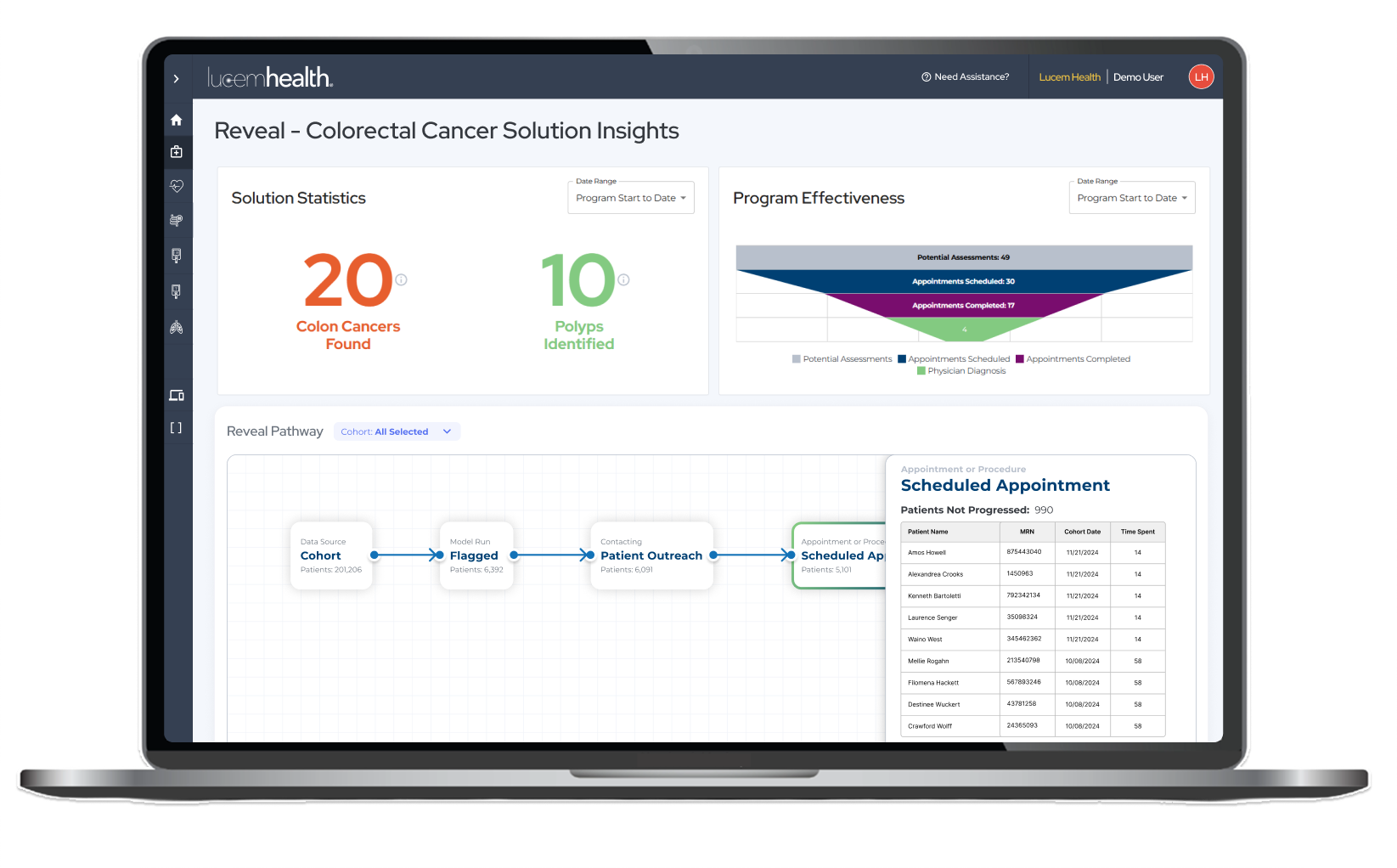Confront today’s challenges with tomorrow’s technology
Lucem Health Reveal is a family of solutions that harness the power of AI to reveal better patient and financial outcomes without adding staff. Reveal helps existing resources focus on delivering higher value, more proactive care—without modifying workflows or requiring extensive data and systems integration.
Confront today’s challenges with tomorrow’s technology
Lucem Health Reveal is a family of solutions that harness the power of AI to reveal better patient and financial outcomes without adding staff. Reveal helps existing resources focus on delivering higher value, more proactive care—without modifying workflows or requiring extensive data and systems integration.


Simple. Impactful. Valuable.
Reveal solutions helps increase the clinical and financial yield from scarce care delivery resources and delivers a compelling return on investment.
Simple. Impactful. Valuable.
Reveal solutions helps increase the clinical and financial yield from scarce care delivery resources and delivers a compelling return on investment.
Our Solutions
Our Reveal early disease detection solutions offers the opportunity for healthcare organizations to target high cost, high prevalence diseases.
Reveal solutions are deployed on the same technology platform and can scale to align with patient volumes, priorities, and resource availability.
Our Solutions
Our Reveal early disease detection solutions offers the opportunity for healthcare organizations to target high cost, high prevalence diseases.
Reveal solutions are deployed on the same technology platform and can scale to align with patient volumes, priorities, and resource availability.



